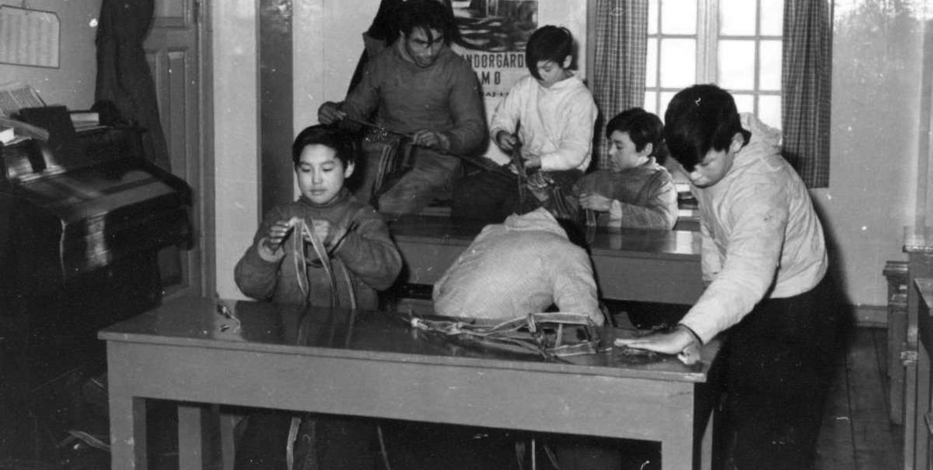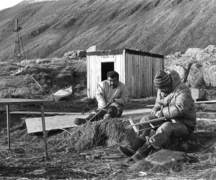Inuit sanagaangamik angissutsinut uuttueriaasiat
Inuit measuring system

“Place the hands palm up against the outer side of the gunwale planks, then place the thumbs above the index fingers on the rib material. Low kayaks require two or three fingers more than the width, whereas high kayaks, like those from Kangaamiut, require four fingers more on both sides of the kajak.”
These are the instructions for building the ribs of a qajaq according to H. C. Petersen, and they contain a wealth of information. All the ribs of the qajaq can be made according to this system, and the height and therefore stability of the qajaq is thus determined by the number of fingers added along the length of the ribs. There are also details on local variations. Given the subjective nature of the measurement, a person with very narrow fingers would use a different measurement - maybe five fingers instead of four.
When the qajaq is used as a hunting vessel the harpoon line is a crucial element. The quality and strength of the line have to be good, otherwise the catch can snap the line. The length of the line also has to be adjusted to fit the hunter and the animal being hunted. The most usual length of a harpoon line is nine fathoms.
This individual measuring system is still used to make dog sledges and dog reins. All the measurements of a dog harness use this system. It is important that the harness is made to fit the dog, otherwise the animal can be injured or prevented from breathing properly, thus reducing its capacity to perform. Each sledge driver therefore has the size of each dog in his head using the measurements of his forearm, palm and fingers. Similarly the sledge driver has his own way of measuring the reins – usually in fathoms.


